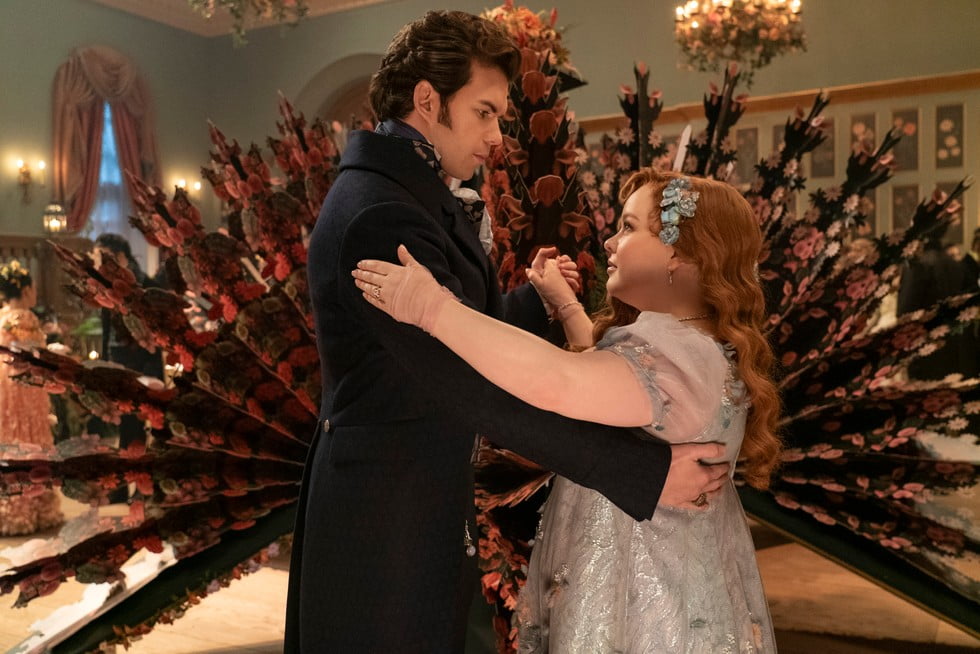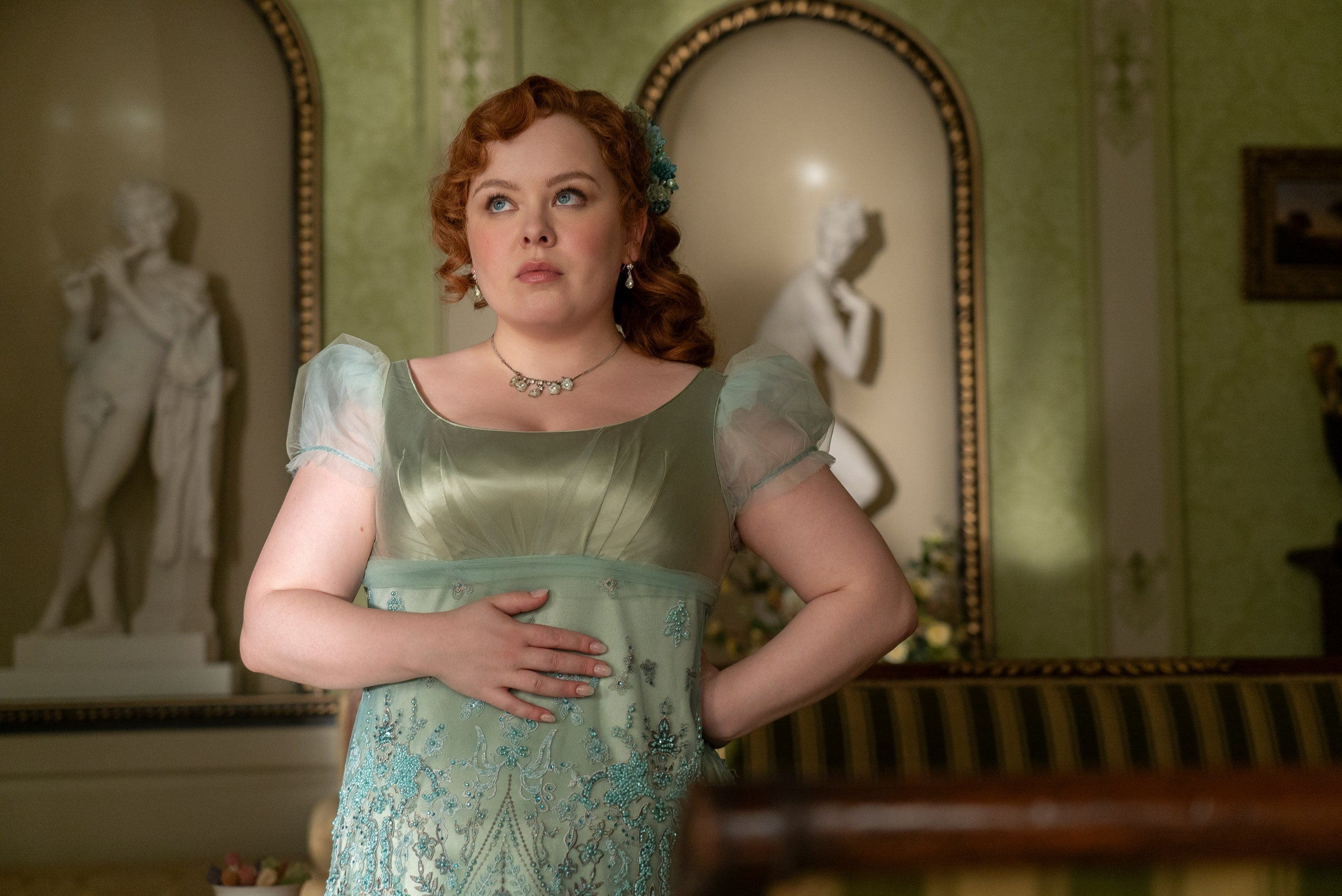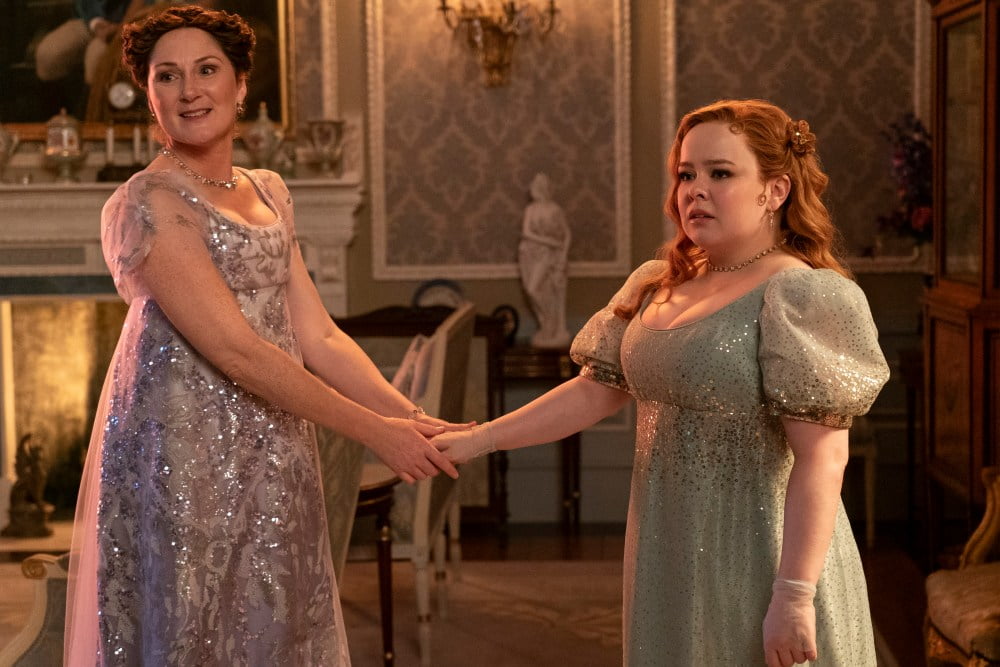Spoilers ahead!
As of writing this review, season three of Netflix’s Bridgerton has replaced Baby Reindeer to become the tenth most-watched series in the streamer’s arsenal, with a cumulative 733 million hours watched, and 91 million completed viewing equivalents. The explosive popularity of the newest season, with such an impressive accomplishment in barely three weeks since its entire release date, has guaranteed stardom for its stars. Still, it also brings forward the question, what does the success of Bridgerton entail for the rest of the shows in the streaming model?
The ahistorical look
Season Three of Bridgerton takes a departure from the tried-and-tested formula of having two enemies fall in love (Pride and Prejudice, Romeo and Juliet) and spins a love story between two long-term friends, who fall in love, get married (though not without, ahem, compromisations) and live happily ever after, with few blips in the timeline, all in a single Season of Mayfair Madness. It is, in fact, madness; to imagine a life taken up solely by hedonism and epicurean pleasures might seem enchanting. Still, one imagines the carousel of balls and parties would grow tiring far too quickly.
Pleasant eye-catching fodder it may be, but Bridgerton is no Wolf Hall, nor does it wish to be so.
Pleasant eye-catching fodder it may be, but Bridgerton is no Wolf Hall, nor does it wish to be so. The costumes are more ahistorical than the previous seasons, with Queen Charlotte’s battery-powered swan wig and Coughlan’s rhinestone-studded eye look. The ahistoricity of the costuming itself, provides a much-needed break from the timeline and frees the show of any obligation to adhere to the historical mold.
With shows like My Lady Jane breaking free of the “period drama” mold by introducing anachronistic dialogue, and fantastical elements, Bridgerton achieves this with its costuming, which serves as a conduit for the story and for the willing suspension of disbelief for the viewer.
The books that Bridgerton is based on, are written by Julia Quinn, an American woman, who wrote eight novels on the English Regency period; and they are being adapted for the screen by Shonda Rhimes, famed for Grey’s Anatomy, and Jess Brownell, while being acted on screen by British and Irish actors.
It is Historical Britishness, refracted over and over again to bring to the viewers something of a mish-mash, which translated easily for our viewing pleasure.
It is Historical Britishness, refracted over and over again to bring to the viewers something of a mish-mash, which translated easily for our viewing pleasure. Whether the abundance of plot devices and lack of any satisfactory arc endings for some characters bother us or not, Bridgerton is a show that is designed to be appealing, visually as well as psychologically.
The plot of Bridgerton s3 part 2
Part Two of Bridgerton primarily deals with the fallout after Penelope Featherington (Nicola Coughlan) is discovered by her fiance, Colin Bridgerton (Luke Newton) as the Ton’s most notorious (and well-read) gossip columnist, Lady Whistledown. Colin’s problem is not merely with his wife being a gossip columnist (and on the Queen’s radar for angering her), but it is also with her being one of the most well-read writers in society; he feels her comments encouraging his own writing as her simply having fun at his expense.
Matters are complicated further (when are they not) when Queen Charlotte (Golda Roshuvel) announces a bounty on the identity of Lady Whistledown, and Penelope’s secret is found out by none other than Cressida Cowper, her primary tormentor throughout the seasons. Penelope’s desire to have a career after her marriage (the horror) is categorically rejected by her mother, Portia Featherington (Polly Walker), not to mention, the other many subplots of the ensemble show that fight for their deserved screen time in a production that would have benefitted from having sixteen episodes, instead of half that.
Bridgerton s3 part 2: the cons and the pros
Bridgerton is an ensemble show; as such, its runtime is divided amongst multiple parallel storylines, all of which converge at the end to make a satisfactory ending. The problem with Bridgerton is therefore, the excess of parallel storylines, and the lack of runtime given to each of them, in order to create a believable ending for all characters. While the streaming model prioritises viewership over satisfactory completion of character and story arcs, season three of Bridgerton feels rushed in places, with storylines that compete for our attention, instead of it being a concerted effort.
The triumph of Bridgerton is as usual, in its characterisation. Colin Bridgerton is, at the risk of sounding repetitive, a breath of fresh air. From the usual brooding, stereotypical hero made popular by Mr Rochester of Jane Eyre (a phenomenon we are still suffering from), Colin Bridgerton is a soft, sensitive male character quite unusual in historical adaptations. His anger with Penelope is justified, but he expresses it through his words and not with his actions. Even his jealousy regarding Penelope’s success as an author while he has yet to find a purpose seems reasonable and not an ostentatious display of anger masking his true intentions.
How many men do we see in real life, or even in fiction, who acknowledge that their romantic counterparts are more accomplished than them, and be content to live in their shadow?
How many men do we see in real life, or even in fiction, who acknowledge that their romantic counterparts are more accomplished than them, and be content to live in their shadow? It does not require a genius to answer that question, there are very few, if not none. Colin Bridgerton is an anomaly, in real life and in fiction. Unpopular opinion: it is much more enjoyable to see a man be in tune with his emotions than be emotionally repressed and unavailable, bordering on abusive.

The rest of the characters seem as fleshed out as can be, given the hurried format of the show; however, Hannah Dodd as Francesca Bridgerton strikes a delicate balance between awkward and bumbling. Her depiction of Francesca makes the viewer empathise, but the moment that presumably took most viewers’ breath away (and hers) was her reaction to the entrance of Michaela Stirling (Masali Baduza) on the screen.
The addition of Baduza to the cast makes Bridgerton’s ensemble even more talented. Baduza, known for her role as Fumbe in The Woman King (2022) is a wonderful presence onscreen as Michaela. For people who will raise their eyebrows as a sapphic romance playing out on the backdrop of Regency England, it will do well to take note of Gentleman Jack (2019) , based on the very real-life character of Anne Lister.
The Bridgerton books (and the show) fall somewhere between the categories of the 1980s bodice-rippers and the quintessential historical novel—they are a fantastical retelling, one replete with tropes that always have happy endings. In the show too, Penelope Featherington gets the dream job, the dream man, and a happy, fairytale ending, all within eight episodes, or roughly eight hours, which would have been unheard of in a Jane Austen adaptation.
In the show too, Penelope Featherington gets the dream job, the dream man, and a happy, fairytale ending, all within eight episodes, or roughly eight hours, which would have been unheard of in a Jane Austen adaptation.
It is this fairytale-like quality that endears Bridgerton to us, even as we decide to pick hairs over whether glittery fabric was invented in the nineteenth century, or if the cut of Penelope’s corset is historically accurate. Viewers would do well to remember the question asked in the previous review of part one of the same show, is it ever truly that serious?
Parting comments: a personal favorite moment of the season was during the final ball, when Philippa Finch, nee Featherington (played by a phenomenal Harriet Cains) declares, ‘Now, Varley! The Bugs!’, releasing a cageful of butterflies in the air. For that scene alone, it is worth giving this season an eight out of ten.






